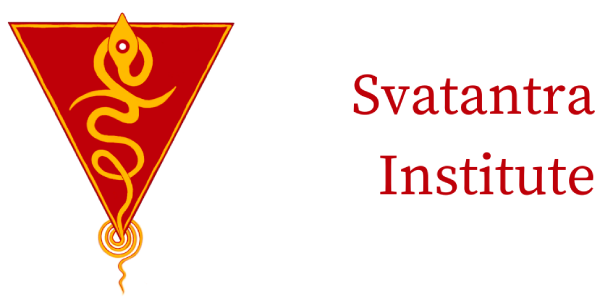In the Resplendent Rhythm Immersion, Kavithaji taught about the cycles of Yugas, or ages. Everything arises from nothing and eventually descends back into nothing. We can look at this through the Big Bang Theory to the eventual dissolution of the universe or through the smallest desire to brush my teeth in the morning and the dissolution of that desire once the action is complete. Each desire, whether on a macrocosmic scale like the entire universe being created and destroyed or on the microcosmic scale of my day-to-day activities, can be seen through the lens of the pralayas and yugas.
The pralaya is the nothingness or complete dissolution of time and space that happens until the next desire occurs. From the perspective of the universe, this can be nothingness that happened before the explosion of space and time with the expansion of the universe that continues to expand today. In the mind/body/heart of me, it can be waking up from the nothingness of deep sleep each morning into the activity of this life.
Kavithaji encouraged us to explore these pralayas of dissolution and stillness in our daily lives. As I paid attention to these moments, I noticed that I rarely allowed myself to experience the pralaya. Many of my days are frantically moving from one task to another with no pause in between. In some instances, I do not even finish a task before starting the next, like when I get up to start doing my dishes before finishing my last bite of food. Even if there is a physical pause between actions, my mind is already going into the next activity, like when I think about what I am going to say next when someone is talking rather than simply listening.
Another insight I had is how uncomfortable it is to be in the pralaya. The self-identity feels threatened there, as if “I” do not exist. When I am engaged in something the “I” is in full force. “I” am eating, working, relationship-ing, meditating, etc. Even when I am not busy with activities, my identity is still active in watching TV, resting, or relaxing. The desire to maintain and sustain the “I” keeps me on a constant hamster wheel of doing so it doesn’t cease to exist. In the effort to maintain this “I” as soon as one activity is nearing an end, the next one comes into my awareness so the “I” can have a seemingly seamless transition. However the pralaya happens whether or not I want it to or if I pay attention to it. I usually bypass it instead of feeling and learning from it.
In The Renegade Method™, Kavithaji teaches us to go directly into the sensations in the body and to inquire what those things are saying about us. I was able to use the pralaya as a portal into self-inquiry, which brought up fear and avoidance of that fear so the “I” could survive. It felt like a void and an emptiness in my stomach.
I have started practicing, as much as possible, to sit in the pralaya. Years ago, Kavithaji gave me a practice to take five breaths between each activity to bring mindfulness into my day. This practice has now turned into a pralaya practice where I take five breaths to simply be. In this practice, I feel the fear of dissolving, the sense of loss of who I think I am, the desire to move away from that to maintain the sense of doership, and at times the quiet empty spaciousness that can exist when I am not constantly trying to maintain Laura.
Kavithaji teaches that in order to understand the Nitya Devīs we need to slow down time. Not rushing from one activity to the next, even in my mind, is one way I can begin that process. When I can be in the pralaya, even if only for a few seconds, I can feel the next desire arise. I can feel the nothingness that happens in my body before the desire arises as a slight heat or tingle in my torso. As I sit and finish my meal, I let the act of eating dissolve and rest in the dissolution until I can feel the desire to get up and do the dishes in my limbs.
Between the finishing and starting is an ever-so-brief moment when I don’t exist. I have died, and before I am reborn, it can feel scary, but it can also feel freeing. The bondage of needing to keep up my self-image is gone. It is scary because who am I if I am not Laura? It is freeing because what if I didn’t have to be Laura? What if I could just be? What if I was nothing and nobody, and I didn’t have to prove anything even to myself? Being a nobody may not sound like an intended goal of upāsanā, or practice, but what I have learned is that being a nobody can be a portal to surrender because I don’t have to maintain an image or identity of a somebody, which can be exhausting. I imagine all the time and space that would open up in life if I didn’t spend all my time maintaining my somebody-ness!
This is a practice of lifetimes for me, but luckily there are countless yugas and pralayas every day if I can catch them. Every time I finish a sentence, take a sip of water, go to the bathroom, or end a session with a client, it is an opportunity to slow down time to observe the “I” die and be reborn again in the next yuga.
Image: Design created using Canva.
